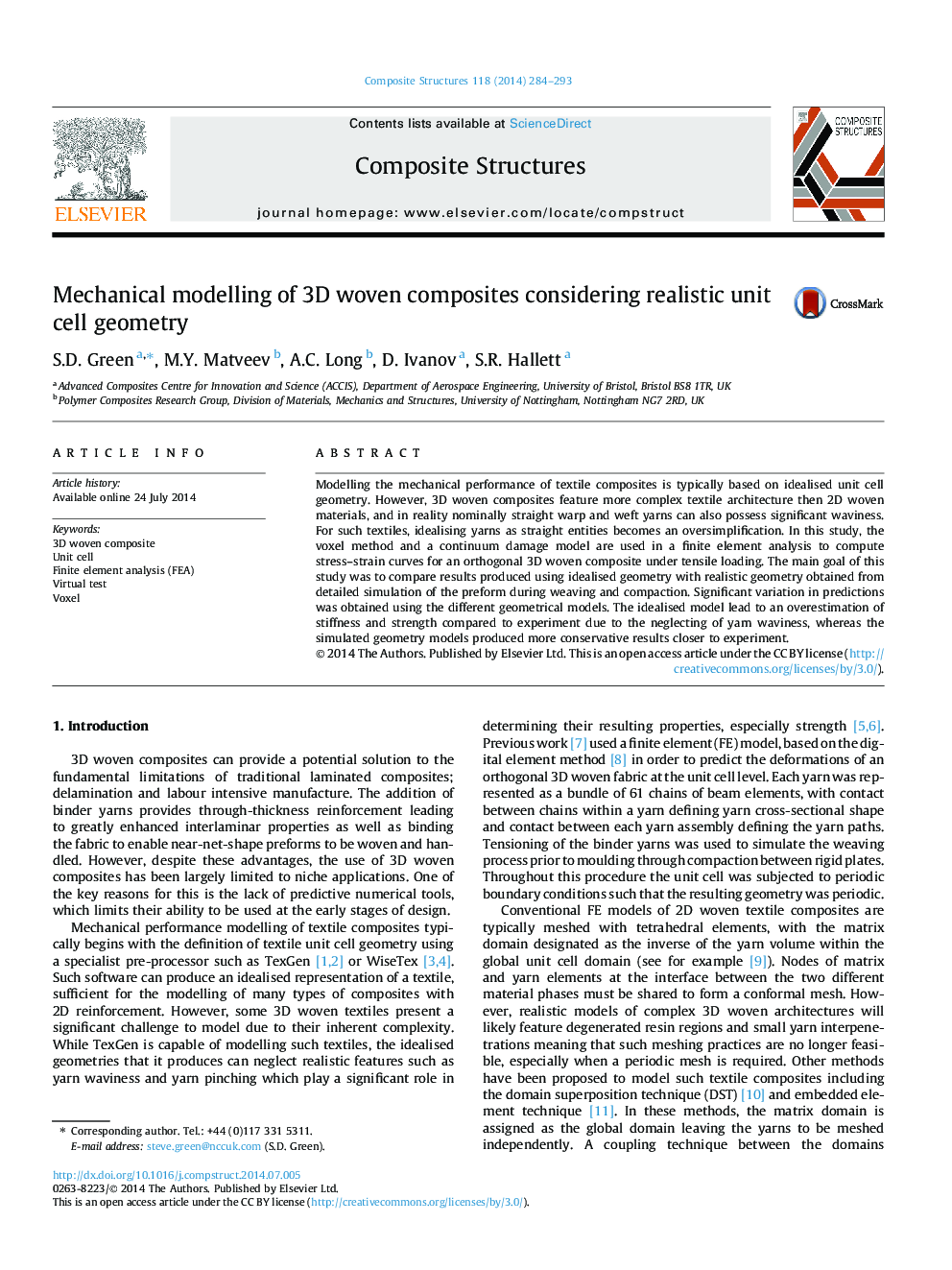| Article ID | Journal | Published Year | Pages | File Type |
|---|---|---|---|---|
| 6707543 | Composite Structures | 2014 | 10 Pages |
Abstract
Modelling the mechanical performance of textile composites is typically based on idealised unit cell geometry. However, 3D woven composites feature more complex textile architecture then 2D woven materials, and in reality nominally straight warp and weft yarns can also possess significant waviness. For such textiles, idealising yarns as straight entities becomes an oversimplification. In this study, the voxel method and a continuum damage model are used in a finite element analysis to compute stress-strain curves for an orthogonal 3D woven composite under tensile loading. The main goal of this study was to compare results produced using idealised geometry with realistic geometry obtained from detailed simulation of the preform during weaving and compaction. Significant variation in predictions was obtained using the different geometrical models. The idealised model lead to an overestimation of stiffness and strength compared to experiment due to the neglecting of yarn waviness, whereas the simulated geometry models produced more conservative results closer to experiment.
Related Topics
Physical Sciences and Engineering
Engineering
Civil and Structural Engineering
Authors
S.D. Green, M.Y. Matveev, A.C. Long, D. Ivanov, S.R. Hallett,
